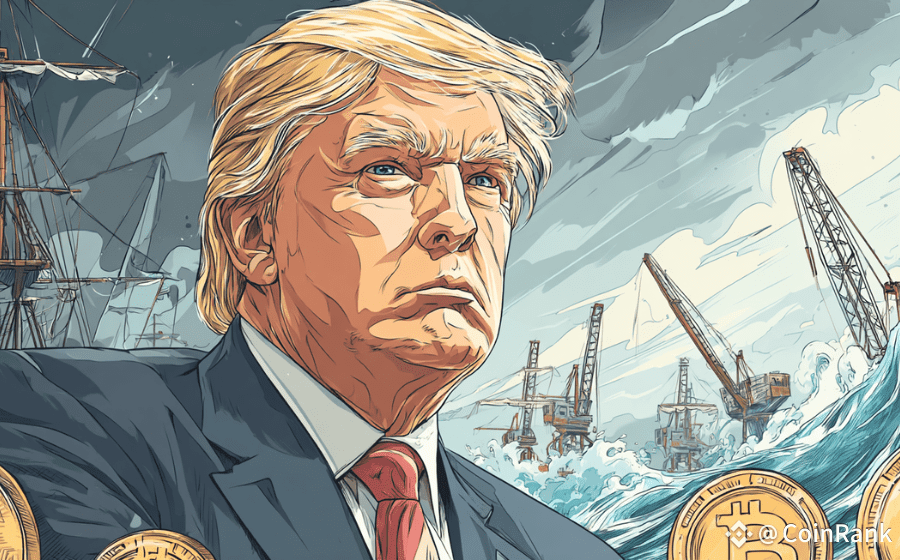Market Impact: Trump’s reciprocal tariffs caused Bitcoin to drop 3% to $113,231, triggering $490 million in crypto liquidations and massive losses in related stocks.
Inflation Hedge: While tariffs create short-term volatility, rising inflation from trade wars could strengthen Bitcoin’s narrative as digital gold and alternative store of value.
Dollar Decline: Escalating tariff policies may weaken USD dominance globally, creating long-term opportunities for Bitcoin as central banks diversify away from dollar reserves.
Trump’s tariffs trigger crypto market selloff with Bitcoin down 3% and $490M in liquidations. Analysis of August 2025 outlook, inflation impact, and long-term opportunities for digital assets.

The cryptocurrency market got a brutal wake-up call last Friday when President Trump’s latest tariff announcements sent shockwaves through global financial markets.
Bitcoin tumbled 3% to $113,231, Ethereum plunged 6%, and Solana dropped 5% as investors rushed to safer assets.
With billions in liquidations and crypto stocks taking even bigger hits, the question on everyone’s mind is simple: are we headed for a prolonged crypto winter, or is this the setup for the next major rally?
THE IMMEDIATE DAMAGE: NUMBERS DON’T LIE
The carnage was swift and merciless.
Bitcoin saw $228 million in liquidations across centralized exchanges in 24 hours, while Ethereum recorded $262 million in forced selling. But the real bloodbath happened in crypto-related stocks. Coinbase, already reeling from disappointing Q2 earnings, crashed an additional 16%. Circle fell 8.4%, Galaxy Digital lost 5.4%, and even newer players like Bitmine Immersion dropped 7.4%.
This wasn’t just a crypto problem. Trump’s “reciprocal tariffs” ranging from 10% to 41% on dozens of countries triggered broad-based risk-off sentiment. When traditional markets panic, cryptocurrency typically gets hammered first as the most speculative asset class.
The timing couldn’t have been worse. August historically brings lower trading volumes and higher volatility to crypto markets. Add tariff uncertainty to the mix, and you’ve got a perfect storm for continued weakness.
WHY TARIFFS HIT CRYPTO SO HARD
Most people don’t realize how dependent the crypto ecosystem is on international trade.
Take Bitcoin mining—the backbone of the network’s security. The vast majority of mining hardware comes from Chinese manufacturers like Bitmain, Canaan, and MicroBT. When tariffs make these machines more expensive, mining profitability takes a direct hit.
But there’s a deeper issue at play.
Cryptocurrency has increasingly correlated with traditional risk assets like tech stocks. When investors get spooked about inflation, recession risks, and geopolitical tensions, they don’t discriminate—everything speculative gets sold first.
As one analyst put it: “In periods of broad-based derisking, crypto tends to get hit as investors pull out of the most speculative and volatile assets”. This correlation has been both a blessing and a curse for crypto’s institutional adoption.
THE INFLATION WILD CARD
Here’s where things get interesting.
Tariffs are inherently inflationary—they make imported goods more expensive, which gets passed on to consumers. The Federal Reserve has been trying to engineer a “soft landing” with gradual rate cuts, but persistent inflation could force them to keep rates higher for longer.
Higher interest rates typically hurt risk assets like crypto.
But there’s a twist: if inflation really takes off due to tariff policies, Bitcoin’s narrative as “digital gold” could get a massive boost. During the 2018-2020 trade war period, Bitcoin rallied from around $3,700 to over $13,000 as investors sought hedges against currency debasement and economic uncertainty.
The key question is timing.
Will Bitcoin behave more like a risk asset (hurt by higher rates) or an inflation hedge (boosted by currency concerns) in the near term?
LONG-TERM IMPLICATIONS: THE DOLLAR’S DECLINE?
Beyond the immediate market volatility lies a more profound shift.
Grayscale’s research team believes “tariffs will weaken the dominant role of the dollar and create space for competitors including bitcoin”. This isn’t just crypto cheerleading—it’s based on observable trends in global finance.
Central banks worldwide have been quietly diversifying their reserves away from dollars.
China, Russia, and other nations have accelerated this process amid growing geopolitical tensions. As the global financial system becomes more fragmented, alternative stores of value become more attractive.
For Bitcoin, this presents a generational opportunity.
Unlike gold, which is heavy and hard to transport, Bitcoin can be moved instantly across borders without government permission. In a world of increasing capital controls and currency wars, this property becomes invaluable.
WHAT TO WATCH IN AUGUST
Several key events could determine crypto’s direction through the rest of the month:
August 12th brings high-level trade talks between the US and China. Any progress toward tariff relief could spark a relief rally across risk assets.
Fed policy signals later in the month will be crucial. If central bankers hint at faster rate cuts due to economic weakness, crypto could benefit from increased liquidity.
Technical levels matter too. Bitcoin needs to reclaim $122,000 to reestablish its uptrend. A break below $112,000 could signal deeper correction ahead.
POSITIONING FOR THE STORM
Smart money isn’t panicking—it’s positioning. As one research platform CEO noted: “After running red hot in July, this is a healthy strategic cooldown. Markets aren’t reacting to a crisis, they’re responding to the lack of one”.
The current selloff might represent the last major buying opportunity before crypto’s next leg higher. Historical patterns suggest that geopolitical uncertainty and currency debasement ultimately benefit Bitcoin more than they hurt it.
For investors, this means maintaining a longer-term perspective while managing short-term volatility. The tariff wars of 2025 could very well be the catalyst that transforms Bitcoin from a speculative asset into a true global reserve currency.
The question isn’t whether crypto will recover—it’s whether you’ll be positioned when it does.
〈Trump’s Tariff Storm Rocks Crypto Markets: What August 2025 Holds for Digital Assets〉這篇文章最早發佈於《CoinRank》。



